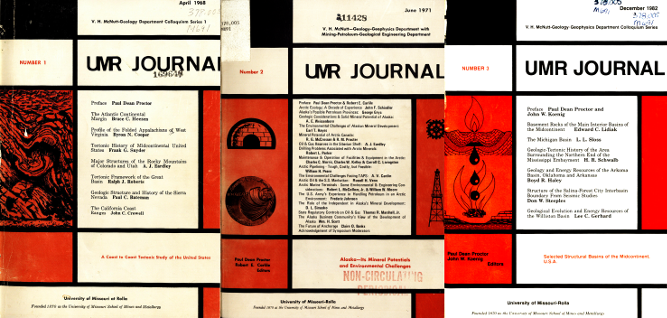UMR Journal -- V. H. McNutt Colloquium Series

Publication Date
01 Dec 1982
Abstract
As petroleum exploration efforts in the Midcontinent become directed toward smaller fields and the search for minerals is extended into new areas, the edges of the Salina and Forest City basins will become of increased interest to industry. The principal boundary feature between the two basins is the Nemaha ridge, a linear feature that extends from near Omaha, Nebraska, to near Oklahoma City, Oklahoma. Recent seismic studies at the Kansas Geological Survey have revealed a complex array of faulted and folded structures in the vicinity of the Humboldt fault zone (the eastern flank of the Nemaha ridge). Faulting of both normal and reverse types is present, including horsts and grabens. Although some Permian age faulting is present, most of the Permian deformation occurred as monoclinal draping at the flanks of the Nemaha ridge. Recent microearthquake activity suggests that some of the faults are slightly active along a zone 400 kilometers long (north-south) and 50 kilometers wide (east-west) coincident with the Nemaha ridge from southeastern Nebraska to north-central Oklahoma. Seismic reflection evidence suggests that either uplift along the Nemaha occurred contemporaneously with Pennsylvanian deposition or uplift and peneplantation occurred during a period of exposure between the deposition of Mississippian sediments and Pennsylvanian sediments. Analyses of boundary structures and intrabasin structures are not complete without knowledge of basement rock history and of basement structure. Microearthquake arrivals and deep reflection data recently obtained from the Consortium for Continental Reflection Profiling (COCORP) in Kansas reveal intrabasement structures in the 10 to 35 kilometer depth range. Data from aeromagnetic studies and basement drilling reveal block faulting patterns and several episodes of Precambrian intrusive and/or extrusive vulcanism. Much of the data presented in this paper is not yet fully analyzed, but preliminary results suggest that the integrated geological and geophysical techniques will be of increased value to petroleum and minerals exploration and will be of assistance in expanding the scientific knowledge of the Earth’s crust and upper mantle in the Midcontinent. Specifically, it is hypothesized that petroleum deposits are related to localized heating in the upper crust and are associated with igneous intrusions and ascension of mantle fluids into the crust probably during Cretaceous time. This hypothesis is consistent with the existence of known deposits of petroleum.
Document Version
Final Version
File Type
text
Language(s)
English
Rights
© 1982 University of Missouri--Rolla, All rights reserved.
First Page
55
Last Page
82
Recommended Citation
Steeples, Don W.
(1982)
"Structure of the Salina-Forest City Interbasin Boundary From Seismic Studies,"
UMR Journal -- V. H. McNutt Colloquium Series: Vol. 3, Article 7.
Available at:
https://scholarsmine.mst.edu/umr-journal/vol3/iss1/7


